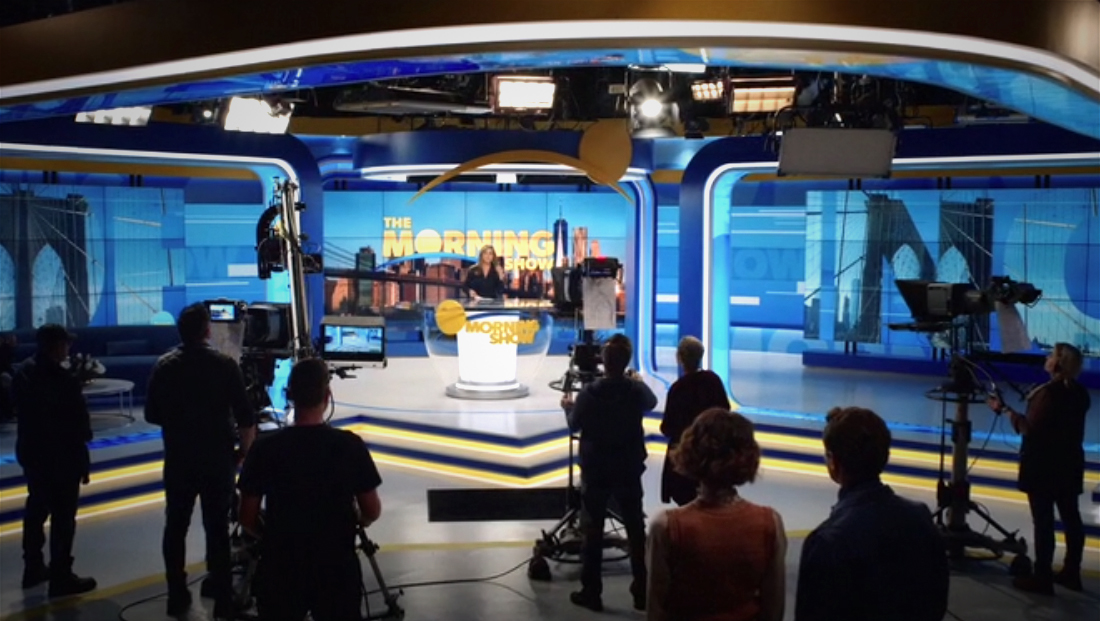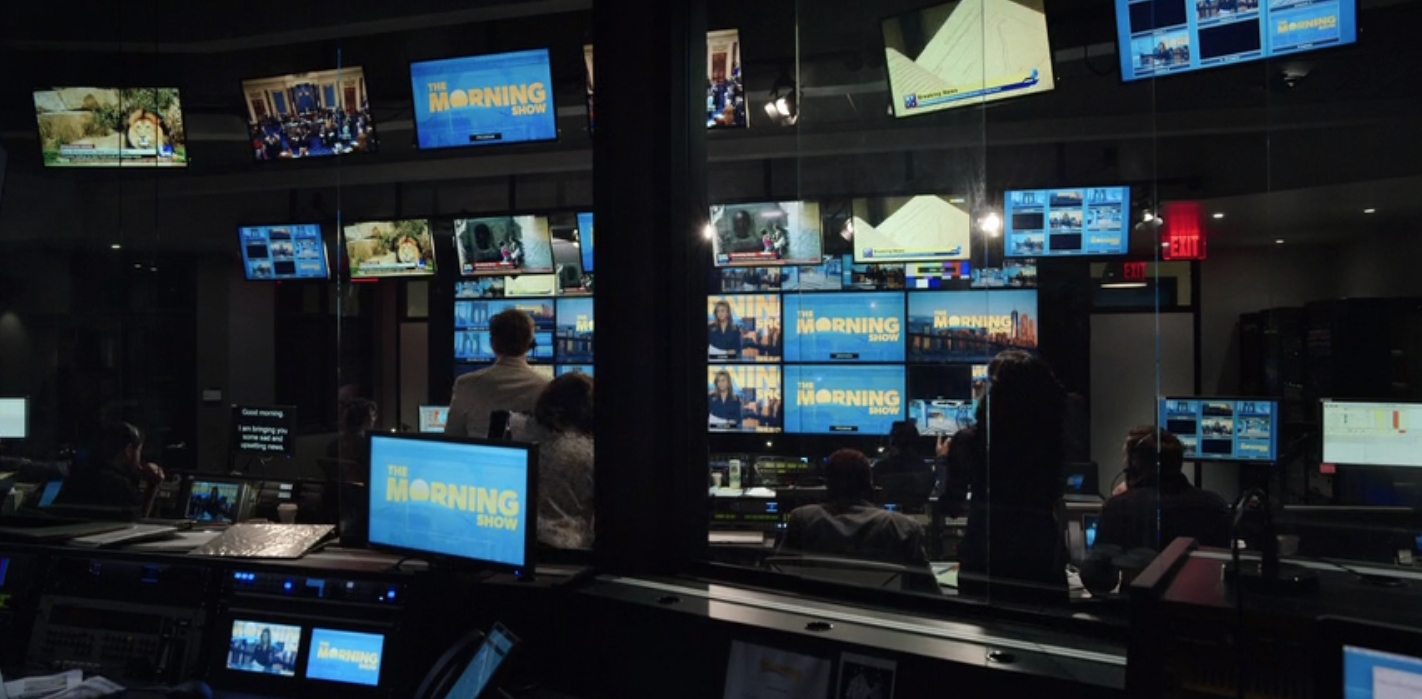‘The Morning Show’ production design draws inspiration from real world of TV news

Subscribe to NewscastStudio for the latest news, project case studies and product announcements in broadcast technology, creative design and engineering delivered to your inbox.
The control room
If the studio is the public face of the show, the control room is the nerve center.
When visiting the often subterranean control rooms of real-life networks, Paino was struck by the resemblance to the bridge of a high-tech submarine or spacecraft.

“The Morning Show” control has some design liberties — especially its size, which feels a bit bigger than what most networks use. It’s also on the same level — indeed even within eyeshot — of the studio and set, something that isn’t always possible for the network studios in Manhattan.
Paino pointed out that in New York, networks are often in older buildings that sometimes were never meant for broadcasting or were originally used for radio.
The control room is a real, fully functional control room that could combine video feeds from the “prop” studio cameras (which were fully functional) as well as graphics systems and off-set playback systems.
All of the equipment is real, including the production switchers and audio equipment.
There is one key difference between the control room set and a real one: It can’t take feeds from any external sources.
However, to create the look of the real-life phenomenon of control rooms keeping an eye on their competitors, the playback systems can be used to feed simulated competitors’ programming.
The control room set is also wrapped in glass windows. Most of these are gimbal mounted to avoid reflections or to help the crew create interesting “fractured” glass effects.
Subscribe to NewscastStudio for the latest news, project case studies and product announcements in broadcast technology, creative design and engineering delivered to your inbox.




tags
Apple TV, Apple TV Plus, Jennifer Aniston, John Paino, Reese Witherspoon, Steve Carell, the morning show
categories
Broadcast Design, Broadcast Industry News, Featured, TV Show Production Design